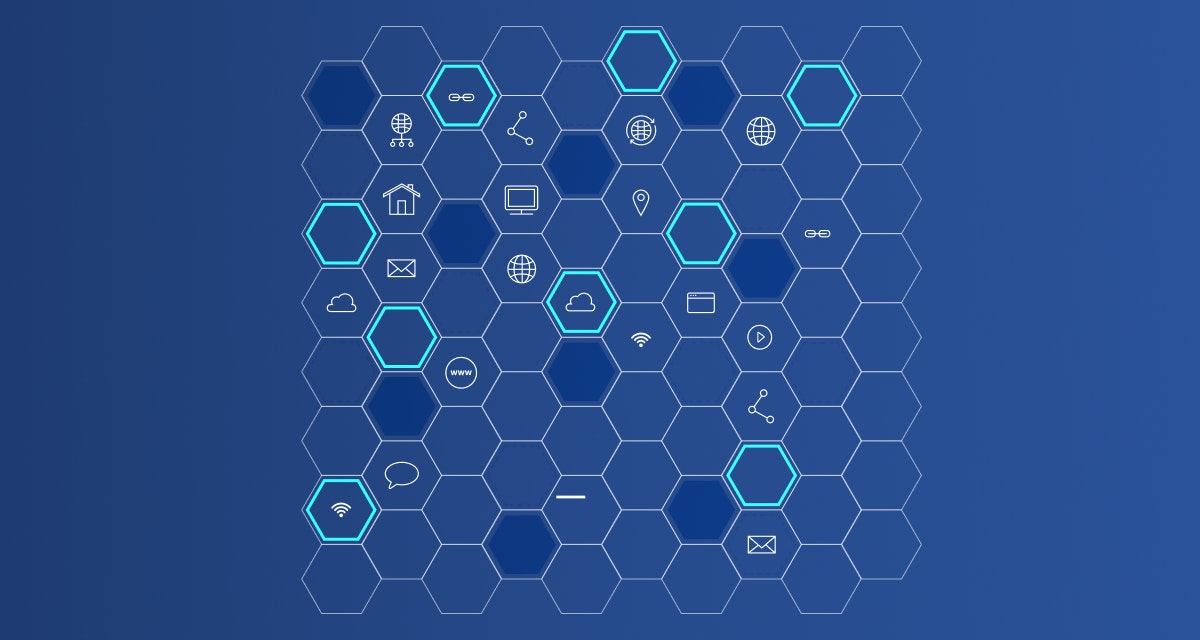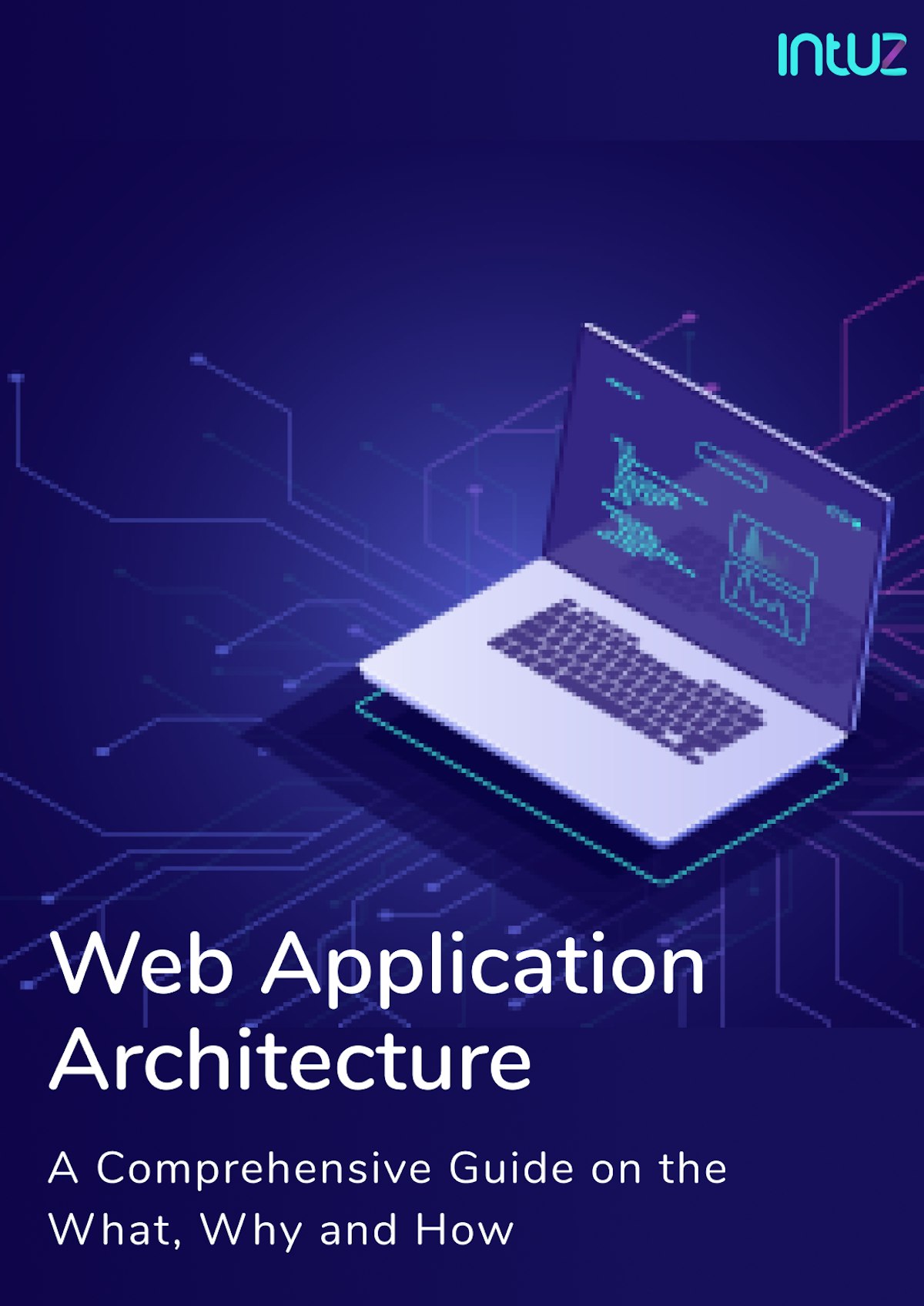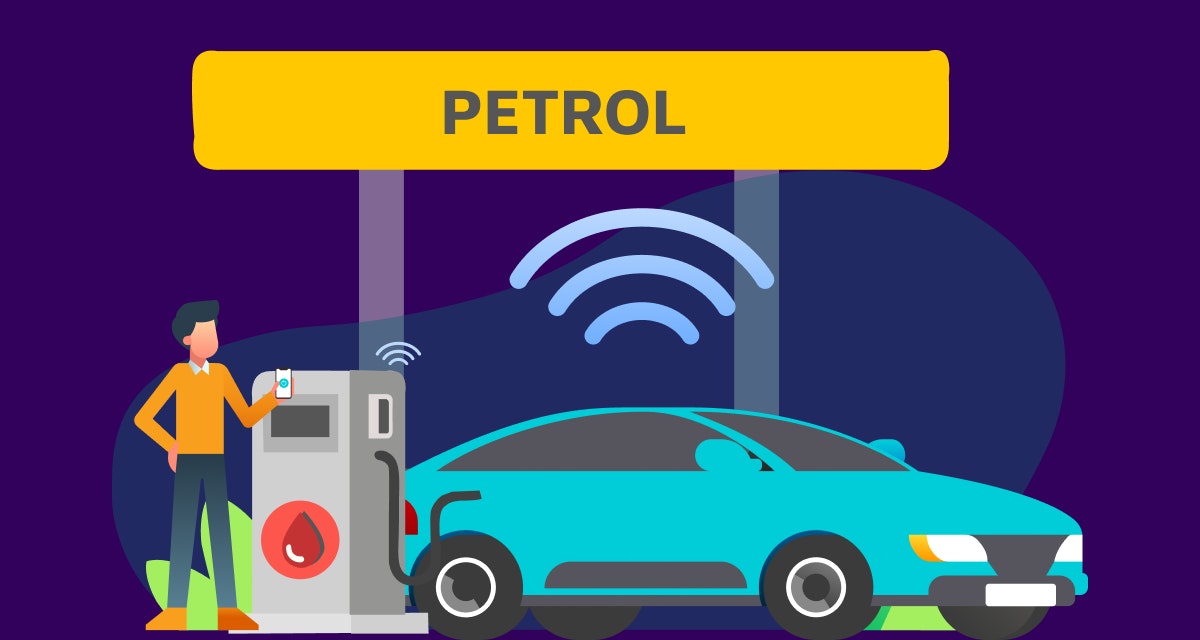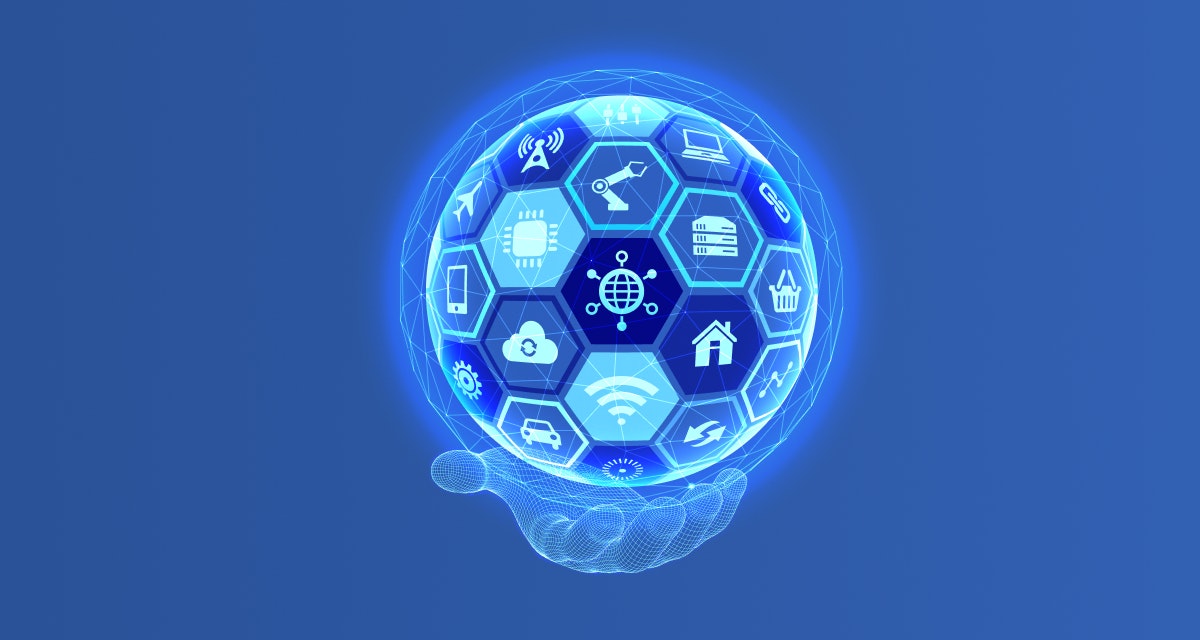Table of Content
The world of the Internet of Things (IoT) continues to grow and evolve at a rapid pace, comfortably and efficiently complementing the cloud capabilities. Generally speaking, IoT is a network of physical objects that exchange data via the internet.
Every advancement in the IoT market brings more businesses to benefit from the technology, which is getting increasingly sophisticated over time. Research shows that in 2022, there is more than 12.2 billion IoT devices in use worldwide.
This number is expected to reach $25.44 billion by 2030. Is it not great? From home automation and agriculture to medicine and supply chains, the benefits of IoT cannot be ignored. The technology has the potential to help different businesses with versatile requirements.
The rise of IoT is inevitable
Not so long ago, human beings produced, processed, and analyzed data themselves. They did not have fancy equipment or wearables to do it for them. Legacy hardware came in handy; however, it also had its limitations.
With the advent of the internet and subsequent technologies, a large amount of data can be collected to help any business grow or any human being with a task. Imagine if you have a device that could tell you the best time to water your indoor plants.
Or if a person had fallen down the stairs and needed immediate medical assistance. Or a shipping company that wanted to keep track of its fleet and the status of its perishable containers in real-time. All of that can be possible with the Internet of Things.
What are IoT development boards?
IoT development boards are hardware platforms designed specifically for creating and prototyping Internet of Things (IoT) devices and applications. These boards typically include:
- A microcontroller or microprocessor
- Built-in connectivity options (e.g., Wi-Fi, Bluetooth, cellular, or other IoT-specific protocols)
- Various input/output (I/O) pins for connecting sensors and actuators
- Power management systems
- Memory and storage capabilities
They serve as the foundation for IoT projects, allowing developers to:
- Quickly prototype IoT devices
- Test concepts and ideas
- Develop software for IoT applications
- Interface with various sensors and actuators
- Implement connectivity and communication protocols
- Explore edge computing and AI/ML capabilities in IoT contexts
Popular examples include Raspberry Pi, Arduino boards, ESP32 boards, and more specialized platforms like the Particle Photon or Nordic Thingy:91.
These boards cater to a wide range of IoT applications, from simple sensor nodes to complex, AI-enabled edge devices, offering varying levels of processing power, connectivity options, and specialized features to suit different IoT project requirements.
Ready to Choose the Right IoT Board for Your Project?
Contact UsKey features to look for in an IoT board
1. Connectivity superiority
When choosing an IoT board, you must always focus on the connectivity options because — after all — IoT apps cannot function if they are not compatible with or adequately connected to the internet or other devices. So ask yourself the following questions:
- Does your development board have built-in WiFi?
- Does it have Bluetooth functionality?
- Does it support Ethernet?
Speak to multiple vendors and get a demo if possible to understand how the board will work for you and what customization you can do with it, if required.
2. Scalability options
If you are investing money to build a fantastic IoT development board, you must ensure that you can add more functionalities to it. Otherwise, the board will become obsolete faster than ever as the IoT technology advances and businesses need to upgrade their systems.
3. Peripheral support
Another component to consider is the support for peripherals, including access to common ports like HDMI and USB or pin-outs for PWM devices such as servo motors and dimmable lights. Again, speak to your IoT board development team to narrow down the specifications so that the end product meets your project’s requirements.
4. Processing power
This could be in the form of a microcontroller, CPU, CPLD, or FPGA. The first option definitely comes in handy for programming the IoT-enabled devices as the majority of manufacturers provide the IDE you need for the job.
5. Board memory
Now that is an important feature because to store volumes of data, you need to ensure the board has a built-in Flash memory, which also allows it to connect a MicroSD or a MiniSD and enhance data storage as and when necessary.
6. Wireless capabilities
This feature provides wireless communication excluding an external transceiver module. Some of the common wireless protocols include WiFi, Bluetooth, and Zigbee.
Also verify if the board communicates through SPI, UART and GPIO to understand how the board will interact with other devices.
Three types of IoT board categories
1. Microcontroller-based boards
Even if you are new to programming and electronics, you must have come across the term “microcontroller boards.” They comprise a small computer developed on a metal oxide semiconductor circuit chip, and are mainly used in implantable medical devices, office machines, power tools, automobile engine control systems and so on.
Programming enthusiasts use the same microcontroller-based boards for learning purposes and Do-It-Yourself (DIY) projects.
2. System-on-Chip (SoC) boards
A SoC board incorporates many system components into a single Si chip, primarily consisting of an audio receiver, memory, peripherals like USB, PCI and SATA, a microprocessor, and an application processor — basically all the required electronic components and circuits.
They find use in a number of industry niches, including medical care where SoC-based nano robots can perform as programmable antibodies to fight serious illnesses. SoC-based video and audio devices can be installed in the brains of blind and deaf people respectively.
Another benefit is that it can deliver high clock speeds while decreasing the power spent by a microchip, if used along with SoI or Silicon-on-Insulator.
Of course, SoC is an evolving technology and some of these examples might seem impossible at the time. However, it does hold a lot of promise in the years to come.
3. Single-board computers (SBC)
This is an easy one. As the name suggests, it is an entire computer developed on one circuit board. It comprises all the features of a functional computer such as memory, microprocessor(s), input/output (I/O) and so on.
SBCs are usually built as development or demonstration systems. A huge variety of portable computers and home computers integrate all their functions onto one circuit board easily. SBC designs are simple and they do not often rely on expansion slots for peripheral expansion.
Many other types of blade servers perform almost like server computers, although in a more compact format.
25 best IoT development boards in 2024
1. Raspberry Pi 5
The Raspberry Pi 5 is a powerful single-board computer with a quad-core 2.4GHz ARM Cortex-A76 CPU, up to 8GB of LPDDR4X RAM, and dual 4Kp60 HDMI outputs, it offers exceptional performance for edge computing and AI tasks. The board features improved I/O, including PCIe 2.0, dual Gigabit Ethernet ports, and USB 3.0.
Its compatibility with previous Raspberry Pi models ensures a smooth transition for existing projects. The Pi 5's enhanced GPU and video capabilities make it ideal for multimedia applications, while its energy efficiency and compact design suit various IoT deployments.
2. Particle Photon 2
The Particle Photon 2 is a Wi-Fi-enabled IoT development board designed for rapid prototyping and production. It features a powerful STM32 microcontroller and robust Wi-Fi connectivity, making it ideal for cloud-connected IoT projects. The board integrates seamlessly with Particle's IoT platform, offering easy device management, OTA updates, and cloud integration.
With built-in USB and extensive GPIO options, it supports various sensors and actuators. The Photon 2 excels in applications requiring reliable Wi-Fi connectivity and cloud-based control. It's compact size and comprehensive development ecosystem make it suitable for both hobbyists and professional IoT deployments.
3. Discovery STM32MP157C Crypto Board
This board comes with a dedicated graphics processing unit that makes it perfect for those developing user-facing applications. It offers Wi-Fi, Bluetooth, and Ethernet connectivity, and is equipped with an STM32MP157 ARM dual Cortex-A7 processor.
The board has 4GB of RAM, can run up to 533 MHZ, and comes with two GPIO expansion connectors for Raspberry Pi Shields and Arduino.
It also features an internal M4 MPU that facilitates a low-power mode, an audio codec, LCD, a touch screen, and a headset jack with an analog microphone. Power comes through a 5V/ 3A USB Type-C power supply.
4. Arduino Portenta H7
The Arduino Portenta H7 is a high-performance, industrial-grade board designed for demanding IoT applications. It features a dual-core ARM Cortex-M7 and M4 processor, providing flexibility for real-time operations and low-power modes. With built-in Wi-Fi, Bluetooth Low Energy, and Ethernet connectivity, it offers versatile networking options.
The board supports Arduino code, Python, and JavaScript, making it accessible to developers of various backgrounds. Its robust design, including a crypto-authentication chip and secure boot, makes it suitable for critical IoT deployments. The Portenta H7's ability to run both high-level applications and real-time tasks simultaneously sets it apart in the IoT landscape.
5. OSD32MP1-BRK Flexible Prototyping Platform
This board from Octavo Systems comes with a unique integrated circuit that combines the RAM, EEPROM storage, power management IC, and other features into a single neat package.
It is ideal for developers looking to do rapid prototyping for a custom PCB involving the Octavo SiP. It comes equipped with an ST32MP15x ARM dual Cortex-A7 processor.
The board has 512MB DDR memory, supports UART communication, and has 106 GPIOs and four user LEDs. Power is supplied through a MicroUSB.
6. ESP32-S3
The ESP32-S3 is a versatile and efficient IoT development board from Espressif Systems. It features a dual-core Xtensa LX7 processor running up to 240 MHz, with integrated 2.4 GHz Wi-Fi and Bluetooth 5 (LE) capabilities.
The board excels in low-power applications, making it ideal for battery-operated IoT devices. With enhanced security features, including secure boot and flash encryption, it's well-suited for sensitive IoT deployments.
The ESP32-S3 supports AI applications with its neural network accelerator, enabling on-device machine learning. Its extensive GPIO count and support for various interfaces (I2C, SPI, I2S, etc.) provide flexibility for diverse sensor integrations and IoT projects.
7. BeagleBone® Green Gateway
Developed by BeagleBoard and Seeed Studio, this board comes with two 32-bit programmable real-time units (PRUs) and real-time Nerves functionality. This makes it perfect for industrial IoT applications that call for low latency for deterministic control.
It can boot Linux in less than 10 seconds and also includes ports for the Grove sensors by Seeed Studio for faster integration. It has Ethernet, Wi-Fi, and Bluetooth connectivity and comes with an AM3358 ARM® Cortex-A8 processor.
The board has 512MB DDR3 memory and 92 GPIOs and supports I2C and UART communication. It also has 4GB eMMC and 4KB EEPROM storage. Power is supplied through a MicroUSB or 5V DC input.
8. Arduino Nano 33 BLE Sense
The Arduino Nano 33 BLE Sense is a compact and feature-rich IoT development board. It combines an nRF52840 processor with Bluetooth 5.0 connectivity and a range of onboard sensors, including temperature, humidity, pressure, motion, and gesture detection.
This makes it ideal for environmental monitoring and wearable technology applications. The board supports machine learning with TensorFlow Lite, enabling on-device AI for IoT projects. Its low power consumption and small form factor suit battery-operated devices.
Compatible with Arduino IDE and supported by a large community, the Nano 33 BLE Sense is accessible to both beginners and experienced developers in the IoT space.
9. ESP32-SE2-Saola-1
This board from Espressif is perhaps the most popular among IoT development boards. It comes with Bluetooth and Wi-Fi connection and has a dual-core Xtensa microcontroller.
With low power consumption and high resistance to temperatures, it is particularly ideal for consumer IoTs such as mobile and wearable devices, as well as smart home projects and data-logging projects.
Developers can develop with Arduino IDE or by using the board’s own SDK easily. ESP32-SE2-Saola-1 has 520K of RAM, can run up to 240 MHZ, and has 46 GPIOs with a variety of 12-bit ADC channels.
It supports UART, SPI, and I2C communication and also has 4MB external SPI flash storage. Power is supplied through a MicroUSB. Other features include built-in antenna switches, a power amplifier, power management modules, touch-sensitive pins, and dynamic power scaling.
10. BeagleBone AI-64
The BeagleBone AI-64 is a high-performance board designed for edge AI applications in IoT. It features a 64-bit TI AM5729 processor with dual ARM Cortex-A15 cores and specialized DSP and GPU cores for AI acceleration. With 1GB of RAM and 16GB of eMMC storage, it offers ample resources for complex IoT tasks.
It includes multiple connectivity options like Gigabit Ethernet, Wi-Fi, and Bluetooth. Its extensive I/O capabilities, including USB 3.0 and HDMI, make it versatile for various IoT applications. The BeagleBone AI-64 supports popular AI frameworks, enabling efficient deployment of machine learning models at the edge.
11. NVIDIA Jetson Xavier NX
The NVIDIA Jetson Xavier NX is a powerful AI-focused development board for advanced IoT applications. It features a 6-core NVIDIA Carmel ARM CPU, a 384-core NVIDIA Volta GPU, and 8GB of LPDDR4x memory, delivering up to 21 TOPS of AI performance.
Excels in tasks like computer vision, robotics, and autonomous machines. With support for multiple neural networks operating concurrently, it's ideal for complex AI workloads at the edge.
The Jetson Xavier NX offers various I/O options and supports multiple cameras, making it suitable for sophisticated IoT systems requiring high-performance computing and AI capabilities.
12. M5Stack Core2
The M5Stack Core2 is a compact, modular IoT development board built around the ESP32-D0WDQ6 chip. It features a 2.0" TFT LCD screen, touch panel, and a built-in 6-axis IMU, making it ideal for portable and interactive IoT projects.
The board includes Wi-Fi and Bluetooth connectivity, a microSD card slot, and a built-in speaker and microphone. Its modular design allows easy expansion with various sensors and actuators.
The Core2 supports Arduino and MicroPython programming environments, making it accessible to a wide range of developers. Its compact size and integrated features make it perfect for rapid prototyping and small-scale IoT deployments.
13. LattePanda 3
The LattePanda 3 Delta is a powerful single-board computer designed for advanced IoT and edge computing applications. It features an Intel Celeron N5105 processor, up to 8GB of RAM, and 64GB eMMC storage, providing PC-like performance in a compact form factor.
The board includes Wi-Fi 6, Bluetooth 5.2, and Gigabit Ethernet for versatile connectivity. With support for Windows 11 and Linux, it offers a familiar development environment for complex IoT projects.
The LattePanda 3 Delta excels in applications requiring high processing power, such as AI inference, data analytics, and multimedia processing at the edge. Its x86 architecture and extensive I/O options make it suitable for industrial IoT and advanced prototyping.
A Guide On The Top 17 IoT Operating Systems For IoT Devices in 2023 And Beyond
Learn More14. Adafruit Feather nRF52840 Sense
The Adafruit Feather nRF52840 Sense is a versatile IoT development board that combines low power consumption with a rich set of sensors. Built around the Nordic nRF52840 SoC, it offers Bluetooth 5.0 and USB connectivity. The board includes a suite of onboard sensors: temperature, humidity, barometric pressure, 9-DoF motion, sound level, and gesture detection.
This makes it ideal for environmental monitoring and wearable IoT applications. With native USB support and compatibility with Arduino and CircuitPython, it's accessible to developers of various skill levels. Its small form factor and low power consumption suit battery-operated IoT devices.
15. Particle Boron LTE CAT-M1
The Particle Boron is open-source and is the ideal low-cost choice for those looking to develop a cellular device. Its chief feature is the cellular module, which supports both 3G and 2G and has SIM card compatibility for more than 100 countries.
It comes with Wi-Fi and Bluetooth connection and is equipped with the Nordic nrf52840 chip. The board can work as a standalone cellular endpoint or as an LTE-enabled gateway for Particle Mesh networks, which is particularly useful in situations where a Wi-Fi connection is not available or is patchy.
The board has 256KB RAM, 4MB on-board SPI flash storage, and 20 GPIOs, including six analog channels, and supports I2C, UART, and SPI communication.
Power is supplied through the micro USB, integrated Li-Po charging, and battery. Other features include two SARA cellular modules and three months of free access to Device Cloud through a cellular gateway.
16. Pycom Fipy
It is named so as it offers five networks on a single board. It can be used in IoT projects where you need to enhance RF sensitivity and signal quality. You may implement such projects in areas with poor cellular coverage.
The board reduces output power during transmission to improve battery performance. FiPy is a Micropython-programmable IoT board that offers LoRa, Sigfox, and dual LTE-M (CAT-M1 and NB-IoT). It gives access to Wi-Fi (up to 1 km range), Bluetooth, and global LPWAN networks.
This Powerful CPU fits in a standard breadboard and runs on ultra-low power compared to other connected microcontrollers. Fipy is enabled by a Dual processor and WiFi radio system on a chip coupled with an extra ULP coprocessor.
These processors can monitor GPIOs and ADC channels while controlling the internal peripherals during the deep-sleep mode.
It is supported by 4MB RAM and 8MB Flash Memory. You must use an appropriate antenna for establishing your wireless connections except for WiFi and BLE. It costs €146.95.
17. STM32 Nucleo-144 boards
The STM32 Nucleo-144 boards are a family of high-performance development platforms for IoT applications. These boards feature various STM32 microcontrollers, offering a range of processing power and peripherals. They support Arduino-compatible headers for easy expansion and come with a built-in ST-LINK debugger/programmer.
The Nucleo-144 boards excel in applications requiring robust processing capabilities and extensive I/O options. With support for multiple RTOSes and middleware, they're suitable for complex IoT systems. Their flexibility and the wide ecosystem of STM32 development tools make them popular for industrial and professional IoT projects.
18. i.MX 8
It is a series of application processors that are feature-rich and performance-scalable multicore platforms. They are part of NXP's EdgeVerse™ edge computing platform.
The board uses advanced full-chip hardware-based virtualization and domain protection to offer fast multi-OS platform deployment.
You can deploy these proprietary microcontrollers for multimedia applications that are rich and fully independent. It incorporates Vision and Speech Recognition to deliver high-quality graphics and content across 4x HD screens or 1x 4K screens.
The underlying powerful vision pipeline and audio processing subsystem support interactivity. The board allows rapid deployment of multiple products through software-friendly, copy-exact IP blocks.
It is powered by multiple connectivity options such as 2x PCIe 3.0 (2-lane or 2x 1-lane) and dual Gigabit Ethernet with audio-video bridging (AVB). The solutions are ideal for advanced graphics, imaging, and machine vision.
The high-quality audio, voice, and video functions are useful for building safety-critical applications. Safe and isolated execution of multiple systems on one processor is provided by resource partitioning and split GPU.
64-bit LPDDR4 RAM support helps in processing large amounts of data quickly and efficiently. It costs $1049.
19. Nordic Thingy:91
The Nordic Thingy:91 is a cellular IoT prototyping platform designed for the rapid development of LTE-M, NB-IoT, and GPS applications. It features Nordic's nRF9160 SiP, combining a powerful ARM Cortex-M33 processor with a multimode LTE-M/NB-IoT modem.
The board includes a range of sensors (temperature, humidity, air quality, color, light) and supports Bluetooth LE connectivity. Its compact, battery-powered design makes it ideal for mobile IoT applications.
Thingy:91 excels in asset tracking, environmental monitoring, and other cellular IoT use cases. With support for Nordic's nRF Connect SDK, it offers a comprehensive development environment for IoT projects requiring cellular connectivity.
20. Sipeed Maix Amigo
The Sipeed Maix Amigo is an AI-focused IoT development board built around the Kendryte K210 RISC-V processor. It features a dual-core 64-bit CPU and a KPU (Neural Network Processor), making it ideal for edge AI applications.
It consists of a 3.5" touchscreen, camera, microphone, and speaker, suiting it for computer vision and audio processing tasks. With 8MB of on-chip SRAM and support for TensorFlow Lite, it can run complex AI models efficiently.
The Maix Amigo supports MicroPython and C programming, offering flexibility for developers. Its combination of AI capabilities and multimedia features makes it excellent for interactive IoT projects and smart device prototyping.
21. Teensy 4.1
It is a development board offered by PJRC. It runs on Arduino's IDE software with the Teensyduino add-on as the primary programming environment. It is equipped with the advanced features of PlatformIO IDE which is a cross-platform development environment.
Its high performance is dedicated to the fastest microcontroller. Teensy 4.1 is supported by an expanded set of powerful peripherals in a 2.4 by 0.7-inch form factor. The board uses 5 Pins with power management as a USB host.
The Ethernet port is connected using a magjack and capacitor. Teensy 4.1 is enabled by a Flash memory of 8 Mbyte and QSPI memory of 2 chips along with locations to solder them. You can add a PSRAM chip to the smaller location and flash memory to the larger location.
Teensy 4.1 has a USB Host port enabling you to connect USB devices, such as keyboards and MIDI musical instruments. You need a 5-pin header and a USB Host cable for plugging in a USB device. It costs $30.85.
22. Meadow F7
It supports development on real embeddable hardware. It is a Micro Development Kit (1.9"×0.9") powered by an STM32F7 microcontroller clocked at 216 MHZ. This full-stack kit is offered by Wilderness Labs, built on .NET and C#. It is a robust IoT platform.
Meadow F7 allows you to build out of the box as it comes with a breadboard and an integrated battery charger. It also includes a pre-integrated driver and hardware API library. These features allow users to quickly develop the application.
The board runs on an energy-efficient STM32F7 microcontroller with 32MB RAM and 32MB Flash storage, enabling you to run large programs. It also features an ESP32 co-processor onboard, for providing Wi-Fi and Bluetooth capabilities.
Besides the integrated LiPo battery, the board is also charged with solar power. You can access cloud and artificial intelligence (AI) services through NuGet packages and plugins that are easily available. It costs $50.00.
23. Azure Sphere
It is also known as the MediaTek MT3620 development kit. The kit features onboard LEDs and buttons, connectors, and integrated programming circuitry. These are all compatible with the Azure Sphere SDK, easing out the debugging process for you.
This IoT solution offers dual-band wireless network connectivity. The built-in connectivity is for 2.4GHz and 5GHz bands and it can be extended to wired Ethernet (10 Mbps) through an external Microchip ENC28J60 controller.
An Azure Sphere MCU enables you to create secure, internet-connected devices. These devices can be updated, controlled, and monitored remotely. Its multi-core structure includes a Microsoft Pluton-driven security system.
It has 4 MB RAM and 16 MB Flash storage. Azure Sphere runs on a cross-over class of MCUs offering you the advantages of built-in Microsoft security technology and wireless network connectivity. It also leverages the versatility and power of an Arm Cortex-A7 processor. It costs $8.95.
24. Google coral dev board
It is also known as the Coral Dev Board. This single-board module has a removable system-on-module (SOM) that contains eMMC, SOC, wireless radios, and the Edge TPU. It can be used as a single-board computer that accelerates ML processing in a small form factor.
You can also use it as an evaluation kit for the SOM or to prototype IoT devices and other embedded systems. It facilitates fast on-device ML inferencing. The Dev Board allows you to build and deploy fast as it is based on NXP's iMX8M system-on-chip (SOC).
The Edge TPU coprocessor is a small ASIC designed by Google that empowers the board to provide high-performance ML inferencing at a low power cost. You can use it to execute state-of-the-art mobile vision models in a power-efficient manner.
Google Dev Board includes all the peripheral connections needed for project prototyping. These include Ethernet and USB 2.0/3.0 ports, a DSI display interface, a CSI-2 camera interface, speaker terminals, and a 40-pin GPIO header. It costs $146.95.
25. Seeed Studio XIAO ESP32C3
The Seeed Studio XIAO ESP32C3 is a compact and versatile IoT development board that packs impressive capabilities into a tiny form factor. Built around the Espressif ESP32-C3 RISC-V chip, this board offers both Wi-Fi and Bluetooth Low Energy (BLE) connectivity, making it ideal for a wide range of IoT applications.
Its small size (21mm x 17.5mm) and low power consumption make it particularly suitable for wearable technology and space-constrained projects. The board features 4MB of flash memory, and 400KB of SRAM, and operates at 160MHz, providing ample resources for most IoT tasks.
It supports popular programming environments like Arduino IDE and MicroPython, ensuring accessibility for developers of various skill levels. The XIAO ESP32C3 includes a built-in USB-C port for easy programming and power supply, along with 11 GPIOs for connecting sensors and actuators.
Its affordability, combined with Seeed Studio's reputation for quality, positions this board as an excellent choice for both hobbyists and professionals looking to develop compact, efficient IoT devices.
Industry 4.0 - Things To Know About In 2023
Read GuideSelecting the right IoT development board for your project
There is no doubt that there has been a massive increase in the development of low-cost, low-power IoT development boards in the electronic industry. From Intel to open-source Arduino, all brands have stepped up their game to beat competition in the fast-paced IoT sector.
Regardless of what you decide to develop, it is important to choose the best IoT development board. Since it serves as the brains of your project, you cannot take this step lightly.
You must choose something that can communicate with all interconnected electronic components with rather ease. So here are the three key steps you must take to ensure you make the right decision. Good luck!
1. Confirm the development board type
Your development board could fall under several categories as per design and specification. As discussed previously, it could either be a microcontroller board such as Mega and Arduino Uno or a SBC like the BeagleBone Black and Raspberry Pi.
Confirm your project type. Is it visual-focused or sensing-based? Whatever it is should dictate your choice. There is a possibility you might have to use more than one type of boards. For instance, pairing a Raspberry Pi with Arduino Uno would fetch you better results.
Therefore, research thoroughly before making any decision because it is going to stick with you throughout your project, and you do not want it to hamper your progress.
2. Observe the programming language and community
What programming language you use is an important factor to consider in the IoT development board. For example, you could need support for multiple languages, OS and IDEs to create a rich and wholesome experience.
C and C++ are universal programming languages and many boards support them or a similar language like them. On the other hand, IDEs for some boards will allow you to experiment with more than one programming language.
Then there are single boards that usually run on Linux. For instance, the most popular OS for the Raspberry Pi is Raspbian. You also need to ensure you have a strong community of the programming language to fall back on.
Otherwise, it will get pretty difficult to get help in case you hit a roadblock in your project and your programming language offers limited support. So, choose wisely!
3. Check the specifications of the board
The thing that the specifications of your development board have been to be larger is wrong. As long as they get the job done it is important.
Also, the board with more specifications usually costs more and second, it sometimes creates more problems if the development team is not that experienced in working with complicated boards before.
Therefore, it is best to find a medium spec board. Of course, if you plan on adding more functionalities to the board down the line, then opt for better specs.
Explore Ultimate Guide to Select Best Industrial IoT Gateways!
Read NowOver to you
In this guide, we studied everything there is to know about IoT development boards and individually explored 25 awesome options for this year. Please note the list is comprehensive but not exhaustive. There are other options too. However, it is a good place to start for your IoT project.
Of course, technology will keep advancing and we will soon find more options to experiment with in years to come. Let us also not forget the creation of numerous products that can solve daily problems. So have fun exploring all the options and choose the one that is easy to use.
What IoT project are you working on? Do you need any assistance from experts who can take the headache from you and develop a product you are proud of?
Regardless of industry niche and project size, we can help! Simply book a free consultation with our IoT expert, and get in touch with us.







